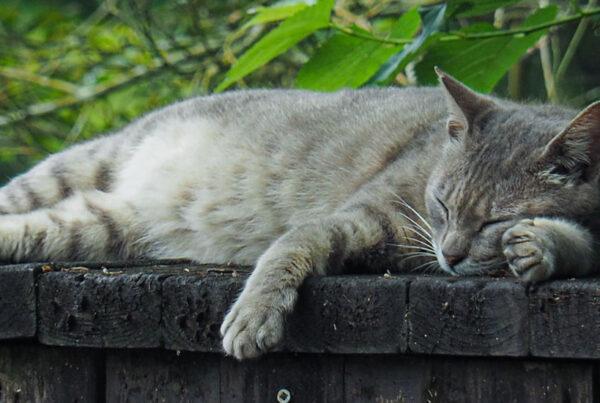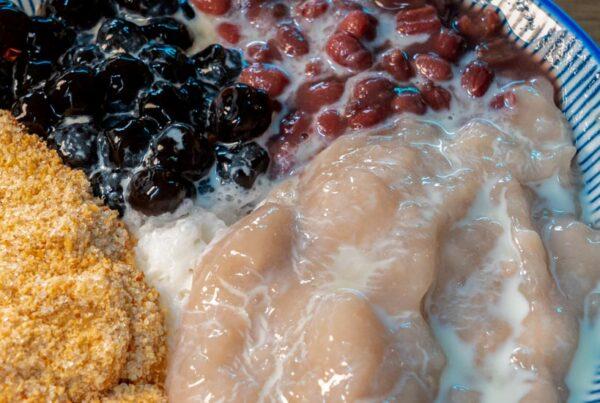Exploring the MRT Zhongshan Station Neighborhood
TEXT / RICK CHARETTE
PHOTOS / VISION
The area around Taipei’s underground MRT Zhongshan Station is today a shopping and leisure hotspot, especially with local young fun-seekers and international tourists, drawing the crowds with glitzy large retailers, scores of cultural-creative shops, and a unique “linear park” dotted with iconoclastic public artworks that flows through the neighborhood’s heart.
MRT Zhongshan Station
This metro station is located in what is known as West Taipei (comprised of Wanhua and Datong, the city’s oldest districts), under the intersection of Nanjing West Road and Xinzhongshan Linear Park. West Taipei’s fortunes ebbed for decades during the last century when the most progressive economic activity shifted to the city’s east, but the Taipei Metro system’s advent in the 1990s along with systematic urban-regeneration initiatives over the past two-plus decades led by the city government have brought a renaissance, especially around the major metro stations.

On a day-tour exploration of this area, entertainment is also to be enjoyed “in” the station itself, for the long underground Zhongshan Metro Mall runs right through the concourse level. This was the first underground mall built in Taipei; it stretches from Taipei Main Station to Shuanglian Station.

↓
[Distance 270m; 4min walk]
↓
Xinzhongshan Linear Park
This green corridor travels directly above the underground mall. The rhythms of the seasons are echoed along its extent with the cultivation of significant plant diversity. While traversing it you’ll also pass a steady stream of whimsical artworks. The park, especially around the metro station intersection, has become a social hotspot, with large retailers concentrated around the intersection; a legion of characterful cafés, eateries, cultural-creative shops, and studios is set up in the vintage buildings, including several meaningful heritage structures, along the park’s sides. At night the park transforms into a “moonlight forest,” aglow with mood lighting, with two key selfie spots a tall people-watching staircase platform overlooking the Nanjing/park intersection, and, not far away, a pedestrian bridge becoming a coruscating 3D tunnel of starlight.

↓
[Distance 260m; 4min walk]
↓
Eslite Spectrum Nanxi
The swank Eslite Spectrum Nanxi (meet.eslite.com) is right on the Nanjing W. Road/Linear Park intersection. Debonair Shin Kong Mitsukoshi department store buildings are right beside and right across. “Eslite Spectrum” is a leading brand name in Taiwan cultured living, each complex built around a posh-design Eslite Bookstore anchor. Within the multi-level Spectrum Nanxi complex are more than 100 Taiwanese brands, such as Mao’s Studio, DengYi, and BUWU.

↓
[Distance 350m; 5min walk]
↓
Museum of Contemporary Art Taipei
Next, head out into the labyrinth of streets, lanes, and alleys surrounding the Nanjing/Linear Park intersection to see how the neighborhood is shaping up, with visits to cultural-creative endeavors. Begin with the Museum of Contemporary Art Taipei (MOCA Taipei; www.mocataipei.org.tw), another key anchor of this neighborhood’s rejuvenation, opened in 2001 as the first museum in Taiwan dedicated exclusively to contemporary art.

Its home is an important protected heritage building constructed by the Japanese in 1921 to house the Jian Cheng Elementary School (primarily Japanese students). After Japan’s WWII defeat and the Republic of China takeover, it long hosted the Taipei City Government (1945~1994). The two-story red-brick structure is a model of architectural symmetry. The architectural style is a hybrid of Victorian and Edwardian elements, with perhaps the most visually compelling attraction being the bell tower rising from the roof’s center. MOCA Taipei, which has no permanent exhibits, focuses on the themes of art, design, and architecture.
↓
[Distance 400m; 6-min walk]
↓
Ri Xing Type Foundry
Hidden inconspicuously away down a narrow alleyway along which the slim shopfronts look as though they were frozen in time in Taiwan’s 1960s, family-run Ri Xing Type Foundry (www.letterpress.org.tw; Chinese) is Taiwan’s sole remaining type foundry. In times past this enterprise played an indispensable role in the field of letterpress printing using movable type; it was established in 1969, just before the local industry began to wane. Ri Xing was left standing alone in 2005 when the last two other Taipei foundries closed, shut down by the digital age’s ascension.

During the last decade, Ri Xing underwent a gradual transition, continuing its preservation of lead-type casting traditions and, more importantly for culture-trippers, through the establishment of a display space dedicated to the movable-type printing craft seeking to save the Chinese-character lead-type casting industry and letterpress printing culture, endowing this elegant ancient art form with new cultural-heritage meaning. Filled with aisle upon aisle of towering stacks of neatly arranged lead-type characters, daily tours are offered (in Chinese) teaching visitors how type is created and how the machinery is used, and visitors can also purchase novel lead-character-type souvenirs.

↓
[Distance 600m; 9min walk]
↓
Mitty
The Chifeng Street area just west of MRT Zhongshan Station, once busy with auto parts and hardware sellers, has emerged as one of Taipei’s two main enclaves for hipster vintage/used-items shopping. The other is the area immediately west of MRT Ximen Station. At the top of the heap in the Zhongshan area is Mitty (www.mittygoods.com; Chinese), tucked away up on the second floor of a low-rise on an alley just off the corner of a neighborhood park (Jiancheng Park), reached via a stairway barely big enough for two passing. You’re directed in by a tiny sign sitting on cinder blocks that reads “Mitty – Vintage/Used/Select.” The zesty second-level façade is constituted of 30 meters of vintage wood planks of far-more-than-rainbow variation. The treasures within range from American and Japanese apparel to digital games, toys, and action figures to sports and movie posters (esp. 1990s~2000s).


↓
[Distance 40m; 1min walk]
↓
Waha Café
Waha Café (www.facebook.com/Wahacafe0417) is just around the tiny-block corner from Mitty. As you turn the corner you’re met with an explosion of plant life outside the shopfront, potted and hanging. The front itself is crafted of soothing light-hue stained-wood panels and a wide wood-frame door, with liberal use of sun-inviting window glass. In the interior, long and narrow, the terrazzo flooring of the original residence Waha resides in has been left in place, and red-brick wall sections and thick wood-beam ceiling sections have been left exposed. The service counter plus another wall section are faced with rustic wood planking a la Mitty. The cuisine and drink are Western – coffees, teas, and other liquids, light foods such as sandwiches, quiches, salads, pastas, and curries with rice, plus rich desserts such as pies, cakes, and tarts.



↓
[Distance 130m; 2min walk]
↓
Iclea x bag
This inventive designer enterprise (icleabag.waca.tw), creating leather and canvas daily-use items that are both fashionable and practical, is right on Chifeng Street just north of Mitty and Waha Café. The premises are both a retail outlet and a work studio. The shopfront is warmly inviting, with the ambiance of a small European forest cottage, complete with a vintage-style wood-frame sash window. Customers can choose from completed display items or have custom-created works crafted.

The range of merchandise includes a carry bag, apron/smock, automobile accessories, and outdoor-use series. Among the more out-of-the-ordinary imaginings for a designer-crafts studio is a smock loaded with pockets and straps for tool storage (apron/smock series), a trash container, and a tissue-paper case (automobile accessories), along with a hand-strap connector for tool-use safety and a tree/fence/etc.-hangable paper-towel roll dispenser (outdoor series).


↓
[Distance 110m; 2min walk]
↓
Petit Pot Cake
Our final three destinations are all located right beside Xinzhongshan Linear Park, in tight mutual proximity. Petit Pot Cake (www.petitpot.com.tw) is a French-style patisserie (with two sister outlets in Taipei) that would look right at home on a quiet Paris neighborhood street, sporting an elegant European-style storefront with the color black prominent and a genteel interior with dark-stain wood prominent. Its cultural-creative calling is to bring distinctive Taiwan flavors to its pastries; only top-quality ingredients are used. In addition to its European-culture offerings, it also has Japanese-style sweet things, the most popular being the Showa-style caramel custard pudding.

A listing of just a few of the delicious names on the shop menu will give you a taste of the decision difficulty you are in for: Basque Cheesecake, Caramel Walnut Cake, Rum Raisin Sandwich Biscuits, Blueberry and Grape Swiss Rolls, Honey Madeleines, and Macadamia Nut Taiwanese black sugar tarts.

↓
[Distance 45m; 1min walk]
↓
Mian Xiang Ding
Taiwan folk love their mian xian, or rice vermicelli, for breakfast, lunch, and dinner, and the twist at this establishment is mian xian rich with the freshest seafood jewels – something else culinary that the people of island Taiwan are enamored with. All the marine ingredients used are Taiwan-sourced, notably the famously plump and sweet oysters of Dongshi Township on the southwest coast and neritic squid from the Taiwan Strait’s Penghu Islands. The signature dishes feature mian xian with neritic squid. Note that each noodle-bowl serving comes with garlic and cilantro, which can be requested eliminated or reduced on ordering. Side dishes of garlic oysters, garlic squid, and spicy braised intestine are also available.

The eatery operations are all right at the sidewalk arcade, set up to resemble a Japanese yatai, literally “shop stand,” which are small, mobile food stalls. Patrons can sit on stools before the bar-like service counter or at metal drums-cum-tables painted up as Kirin Beer cans.

↓
WAT/Taipei Chifeng Branch
Cap off your productive day of Taiwan culture spelunking and healthy outdoor walking with a browse at this designer cocktail specialist. Its brethren outlet in Xinyi District has a dapper/swish bar, but this outlet is more like a mini-mart. It’s inside the concrete-walled former residence that Mian Xian Ding fronts. The cozy interior space has fridges stocked with a delicious circus of cocktails presented in hipster-colorful takeaway bottles and cans.

Local flavor ingredients are front and center, with provocative names such as Strawberry Yogurt Green Tea Sparkling Cocktail, Yuzu and Ginger Cocktail, Red Guava Cocktail, and Pomelo Elderflower Cocktail. The house signature potion creatively marries Taiwan-icon Paolyta medicinal alcohol with dragon-fruit juice. Beyond the bottle and can selections, there’s also a mixing station with cups, soda water, and a variety of ingredient inputs that can be mixed and matched to construct your libation inspiration, along with a small selection of inventive edibles, such as Mango Colada Cocktail gummies.

About the author

Rick Charette
A Canadian, Rick has been resident in Taiwan almost continually since 1988. His book, article, and other writings, on Asian and North American destinations and subjects—encompassing travel, culture, history, business/economics—have been published widely overseas and in Taiwan. He has worked with National Geographic, Michelin, APA Insight Guides, and other Western groups internationally, and with many local publishers and central/city/county government bodies in Taiwan. Rick also handles a wide range of editorial and translation (from Mandarin Chinese) projects.















